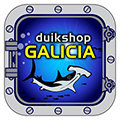- Boeken
- Dive Truk Lagoon, 2nd edition - The Japanese WWII Pacific Shipwrecks - Rod Macdonald
Menu
Alle categorieën
Categorieën
-
Opleidingen
- Categorieën
-
Opleidingen
- Digitaal cursuspakket
-
Opleiding
- Opleidingen
-
Opleiding
- Initiaties
- SCR / CCR
- SCUBA diving
- Extended Range
- Instructor
- Materialen
- Einde reeks
- Kado ideetjes
- PINK
- Adapters
-
Ademautomaten
- Categorieën
-
Ademautomaten
- Ademautomaten
- Accessoires
- Spare parts
-
Analysers
- Categorieën
-
Analysers
- Analysers
- Analyser spares
- Accessoires
-
Basics
- Categorieën
-
Basics
-
Vinnen
- Basics
-
Vinnen
- Zwembadvinnen
- Openwatervinnen
- Jetvinnen
-
Duikbrillen
- Basics
-
Duikbrillen
- glazen op sterkte
- Snorkels
- Accessoires
-
Blenden & boosten
- Categorieën
-
Blenden & boosten
- Boosters
- Blendsystemen
- Blend onderdelen
- Boeken
-
Computers
- Categorieën
-
Computers
- Computers
- Transmitters
- Computer spares
- Upgrades
-
Duikpakken
- Categorieën
-
Duikpakken
- Halfdroog
-
Droog duiken
- Duikpakken
-
Droog duiken
- Droogpakken
- Droogpakboots
- Onderpakken
- Drooghandschoenen
- Droogpakinflatie
- P-valves
- Droogpaktoebehoren
- Heating systems
-
Nat duiken
- Duikpakken
-
Nat duiken
- Natpakken
- Natpaktoebehoren
- Handschoenen
- Kappen
- Botjes
- Sokken
- Kapstokken
-
Fashion
- Categorieën
-
Fashion
- Kledij
- Mutsen / Caps
- Uurwerken
-
Flessen
- Categorieën
-
Flessen
- Duikflessen
- Flestoebehoren
- Rigging
-
Foto / Video
- Categorieën
-
Foto / Video
- Camera
- light
- Accessories V
-
Hardware
- Categorieën
-
Hardware
- Boltsnaps en Dubbelenders
-
Instrumenten
- Categorieën
-
Instrumenten
- Manometers
- Kompassen
- Batterijen
- Meer
-
Kranen
- Categorieën
-
Kranen
- Kraantoebehoren
- Lucht DIN G5/8"
- Nitrox M26x2
-
Lampen
- Categorieën
-
Lampen
-
Primair
- Lampen
-
Primair
- SeaYa
- Handlampen
- Kabellampen
- Back up
- Video
- Batterij packs
- Spares / Extra's
-
Loodsystemen
- Categorieën
-
Loodsystemen
- V/P-weights
- Loodgordels
- Loodblokken
- Loodpockets
-
Overige
- Categorieën
-
Overige
- Duikzakken
- Allerlei
-
Rebreathers
- Categorieën
-
Rebreathers
-
rEvo
- Rebreathers
-
rEvo
- Onderhoud
- Electronics
- Gas
- Hardware
- Spare Parts
- Consumables
- Tools
- Divers
- JJ-CCR
-
Inspiration
- Rebreathers
-
Inspiration
- Onderhoud
- Electronics
- Gas
- Hardware
- Spare parts
- Consumables
- Tools
- Divers
- Liberty CCR
- SCR Horizon
- KISS
- CCR algemeen
-
Reels, OSB's, etc
- Categorieën
-
Reels, OSB's, etc
- Reels & spoeltjes
- OSB's
- Diversen
- Service
-
Scooters
- Categorieën
-
Scooters
- DPV accessoires
-
SeaCraft
- Scooters
-
SeaCraft
- Spares SC
-
Blacktips
- Scooters
-
Blacktips
- Spares BT
- Carbon Scooter
- Sidemount
-
Slangen
- Categorieën
-
Slangen
- Spares
-
Tools
- Categorieën
-
Tools
- Leatherman
-
Trimvesten en wings
- Categorieën
-
Trimvesten en wings
- Trimvesten
- Wingsets
- Wings
- Harnassen
- Spares trim&wing
- Accessoires
-
Veiligheid
- Categorieën
-
Veiligheid
- O'Dive
- Rescue
- COVID19
- Messen
-
Zuurstofsystemen
- Veiligheid
-
Zuurstofsystemen
- Complete sets
- Systemen
- Zuurstofflessen
- Koffers
- Maskers
- Andere
- Vrijduiken
-
Zwemmen
- Categorieën
-
Zwemmen
- Zwembrillen
- Badmutsen
- Badkleding Mannen
- Badkleding Vrouwen
- Training Aids
- Accessoires
- Schietsport
Pagina's
Taal
online betalen
http://www.galicia.be
0475257720



